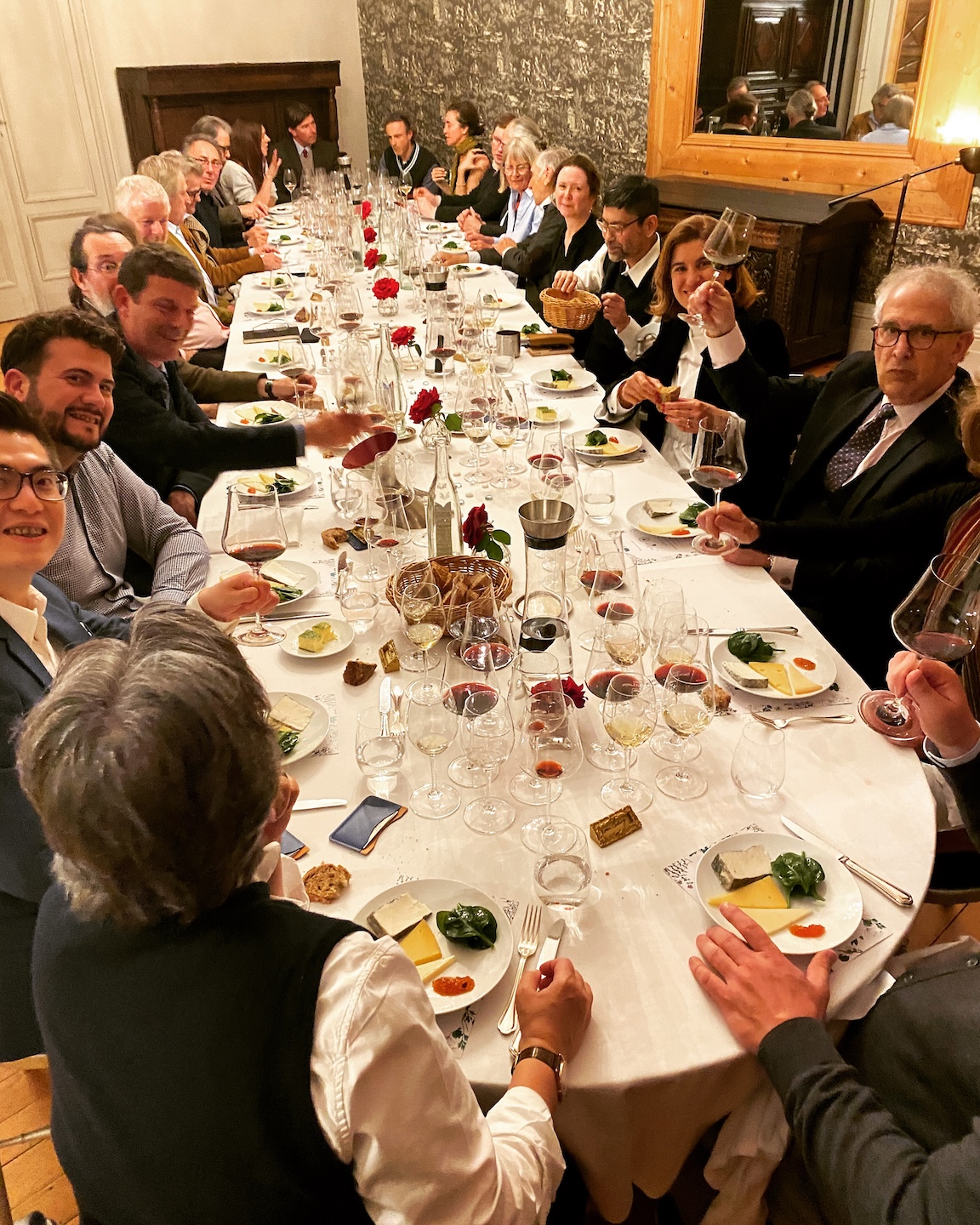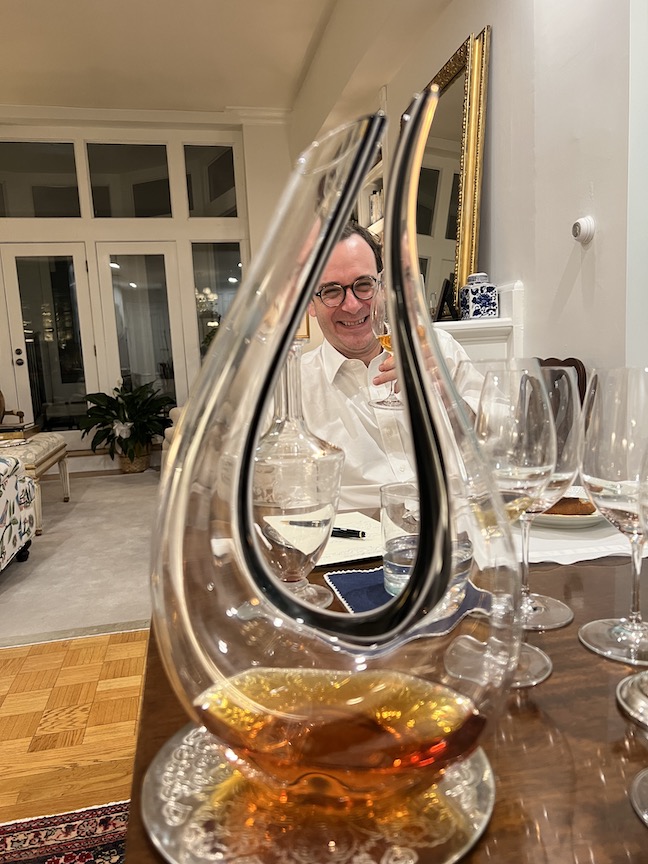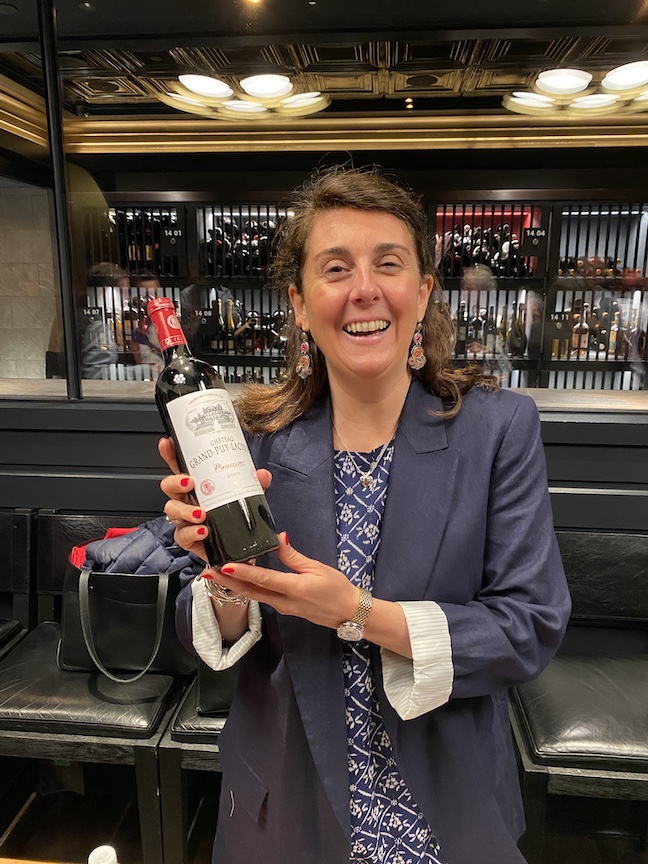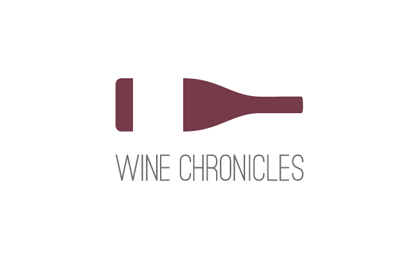Wine is to alcohol what Beethoven is to noise
Posted on September 24, 2025

Why wine is not the same as cigarettes, vodka or Coca-Cola: An appeal from the International Wine Academy (AIV)
24 September, 2025
This week at the 4ᵗʰ United Nations High-Level Meeting on the prevention and control of noncommunicable diseases and the promotion of mental health and well-being, the wine world faces a challenge: How to prevent and control noncommunicable diseases without making culture collateral damage on the altar of public health?”
When most people think of the UN General Assembly, Ukraine, Gaza and other pressing geopolitical issues come to mind. But wine, via the UN’s World Health Organization (WHO), is a major part of the UN brief.
One can argue that the wine industry has not done enough to stress the potential ill effects of alcohol in wine, but it is absurd to reduce wine to just alcohol. And yet that is what the World Health Organization’s “Zero Draft Political Declaration” does. Still under review, it proposes further taxing wine as tobacco, spirits, or sugary drinks. Wine is neither Coca-Cola—nor cigarettes. Especially putting wine at the level of evidently harmful tobacco consumption is disingenuous.
While tobacco has zero redeeming qualities, wine – in moderation – does. Take for example a 2022 NIH study – among many others. While the alcohol abuse, including wine, is seriously harmful to health, the study points to epidemiological and clinical evidence on the protective role of moderate quantities of wine on health. In differentiating wine from more harmful hard alcohols, like vodka, the study notes that a moderate intake of wine was associated with a significant reduction in cardiovascular events including cardiovascular death.
And yet the WHO draft calls for reducing the “harmful use of alcohol” by:
1. Banning or comprehensively restricting exposure to wine advertising
2. Restricting the physical availability of retailed wine
3. Enacting and enforcing drink-driving laws
The last point makes sense. But lumping wine with all liquor under the first two is misguided.
Provisions from the WHO Global Alcohol Action Plan 2022-2030 (GAAP) seek a 20% reduction in per-capita alcohol consumption by 2030 (from a 2010 baseline). The plan aims for 70% of countries to have introduced, enacted, or maintained key “high-impact policy measures” by 2030, which target pricing, availability, and marketing of alcohol.
How denormalizing wine could “destroy a heritage”
The World Health Organization (WHO) and UN agencies moreover talk of “denormalizing” alcohol, which means changing public attitudes so that drinking wine is no longer seen as normal, socially acceptable behavior, and reducing cultural acceptance of alcohol in public life (advertising, sponsorships, social events, etc.). Denormalizing also discourages associations between wine and positive values like celebration, success, or relaxation while framing wine like tobacco: something inherently harmful that should not be promoted, normalized, or glamorized in society.
In its Appeal to the UN (also in French), the Academy of Wine (AIV) points out that wine is more than a drink: it is history, heritage, culture – and economy. Indeed, with tariffs already straining exports, equating wine with spirits risks economic loss.
From the Appeal:
TO DENORMALISE WINE WOULD DESTROY A HERITAGE – A LEGACY OF HUMANITY
Wine embodies eight millennia of human history: it is a catalyst for conviviality, joy and sharing; a connection to the land and its landscapes; a universal language linking people – from Georgia to Ancient Greece, from Oregon to Tuscany, from France to New Zealand. Unique yet global, it expresses mankind’s patience before time, humility before the earth, and the desire to celebrate together. Offering a glass of wine is a gesture that expresses peace, friendship, brotherhood, and the joy of being together.

On the joy of being together, with wine
Enjoying wine moderately is to defend the culture of taste and restraint, and perpetuate a bond that unites continents, people and generations. It is about appreciating rather than abusing, tasting rather than drinking. It is about approaching health through social and family ties, mental well-being and the joy of life – for the link between happiness and health is undeniable.
Wine also concerns diplomacy. This past July in Strasbourg, French Ambassador Pap Ndiaye hosted Council of Europe a Bastille Day party with fine Bordeaux from Pessac-Léognan. The title image for this article comes from the fête, showing Pessac-Léognan winemakers Ghislain Boutemy, at left, and Jacques Lurton, who is President of the Pessac-Léognan Wine Council. As ambassadors and other staff from the 46 member states of the Council of Europe were exchanging ideas about pressing issues in private conversation, they enjoyed fine red and white wine brought from Pessac-Léognan to Strasbourg. Guests discovered some history from the Graves region, where the appellation Pessac-Léognan exists, including Samuel Pepys’ 1660s praise for Ho-Bryan—the future Château Haut-Brion. One of countless examples proving that wine is far more than “alcohol.”
As I wrote in Politics, Wine and Diplomacy for Jane Anson, many political decisions happen not in press-covered official gatherings but over private dinners infused with wine. Why wine, and not heavier alcohol? Because wine encourages both conversation and reflection. As Churchill said of Champagne: “the wine of civilization and the oil of government.” Hemingway added: “Wine is one of the most civilized things in the world… offering a greater range for enjoyment and appreciation than, possibly, any other purely sensory thing.”
So when UN member state delegates consider this WHO/UN draft over dinner with fine wine, they should take all of the above into account before approving it. Wine is heritage. Wine is culture. Wine is diplomacy. To reduce it to a health risk alone would be to deface a cornerstone of civilization.
Top brand Bordeaux 2015
Posted on March 7, 2025

Tasted 10 years on
by Panos Kakaviatos for Wine Chronicles
7 March 2025
Thanks to the London-based Bordeaux Index wine trading company, I tasted topflight Bordeaux from the 2015 vintage, “10 years on”. Bordeaux Index hosted the daylong January tasting under excellent conditions: wines at proper temperatures and stemware and plenty of space to comfortably taste.
Although 10 years is not that old for Bordeaux – many reach prime drinking windows at 20 or even 30 years in bottle – it was great to check on a vintage that was highly regarded upon release.
The wines in glass mirror a vintage ripe and sunny. High alcohol levels indeed contrast with the cooler 2014 vintage. Some vines suffered from heat stress and drought, with vines temporarily shutting down. But it should be noted that (especially early) August was cooler and rainier than expected, which, in some locations, freshened the grapes. Variable rains towards harvest also determined quality: the northern Médoc saw more rainfall during this crucial period than the southern Médoc, which explains why Margaux is considered an appellation star from the Left Bank in 2015.
On the Right Bank, some estates in Saint Emilion were still in the grip of the so-called “modern style” of winemaking: near over ripeness and high alcohol leaching excessive oak tannins, leading to drying sensations on the palate. For example, Château Troplong Mondot is more about alcohol than fruit, and it suffers for that, 10 years on. Even the great terroir of Château Pavie remains masked by oak tannins in 2025.
Overall however, the London tasting featured mainly top notch brands, from superlative Saint Emilion wines for consumers to enjoy, as well as fantastic Pomerols. The Médoc counts many wines of balance and power, even if not reaching the level of finesse from the 2016 vintage, which I prefer to 2015. Read More
25 vintages of Château Haut-Bailly from magnum
Posted on March 9, 2024

By Panos Kakaviatos for wine-chronicles
9 March 2024
You know a Bordeaux producer is worthy when their second wine at nearly 20 years old is selected among the top in a blind tasting that included three Ridge Monte Bellos (1996, 2004, 2007), two Château Pontet Canets (2001, 2010), Château Brane Cantenac 1986, Château Beychevelle 1964, and Château Rauzan Ségla 2005.
In a blind tasting of eleven “Bordeaux blend” wines – including wines that could be from around the world, so long as they have Bordeaux grapes – La Parde de Haut Bailly 2006, the second wine of Château Haut Bailly, garnered five votes from six tasters as one of their top three favorites: Of course, before uncovering the labels. The tasting for wine experts working either as educators or in the wine trade took place on 25 February this year at the members-only Wine Bank in Frankfurt, Germany.
The tasting reminded me of just how great Château Haut Bailly in the Graves region of Bordeaux is. A Cru Classé (classified growth) since Graves wines were ranked some 70 years ago, it later became part of the northern Graves appellation Pessac-Léognan, established in 1987, and which includes all Graves’ classified estates. The appellation is so named because these top estates are concentrated around the two towns of Pessac, home of Château Haut Brion, among others, and Léognan, close to where Haut Bailly is located, among others. Read More
A focus on Léoville Poyferré – and more – in Boston
Posted on January 30, 2024
By Panos Kakaviatos for wine-chronicles.com
30 January 2024
Many thanks to Marc Bouffard aka Englishmans Claret – a must-follow on Instagram for anyone who appreciates fine wine – for a wonderful dinner and lunch at Boston’s Somerset Club, featuring the wines of the family of Sara Lecompte Cuvelier, who own the storied second growth in St. Julien, Château Léoville Poyferré along with Château Le Crock, in Saint Estèphe, among other properties.
In less than 24 hours, I had the great pleasure to meet new wine loving friends in a lovely setting and exceptional cuisine by celebrated American chef Michael Shannon to match no less than two verticals of Château Léoville Poyferré, including 1982, 2000, 2003, 2005, 2010 and 2016, among others. And thanks to Marc for sourcing a surprisingly lively 1942! It was also great to see again Ryan Nagle, aka romanee_ryan on Instagram, who is also very passionate about wine, and you should follow him, too.
Marc is drafting a book on the wines of Saint Julien, having visited the estates of this appellation, and he has tasted through vintages as old as 1900, with almost daily updates of tastings on his Instagram, which has nearly 29,000 followers and counting.
As a published wine writer for over 25 years, I appreciate Marc’s genuine wine passion, tasting acumen, and sincere geniality. For the two tasting events, he gathered people from a variety of backgrounds who share a common fine wine interest – without an ounce of pretentiousness.

Marc Bouffard, aka englishmans_claret on Instagram, is working on a book on Saint Julien, but here we are enjoying a fine Yquem on a previous occasion in Boston
The first vertical over dinner on January 23rd began with a tasty grower’s Champagne – François Secondé Grand Cru Brut NV Sillery Champagne – to match pan-seared sea scallops with pear parsnip purée, pomegranate reduction and petite chicory. The bubbly proved smooth and vibrant, with pleasing petillance texture. I liked the crisp ripe apple, lemon, and floral aspects as well as telltale brioche. Read More
2020 Bordeaux: bottled classic
Posted on October 21, 2023

By Panos Kakaviatos for wine-chronicles.com
21 October 2023
Dear Readers,
It has been a while, but after buying a new apartment with renovation work, prioritizing articles in magazines for which I am paid, and work from my day job at the Council of Europe, I took a hiatus from this website. Also because WordPress sucks. Seriously, there is always a bug, so I am looking into other website options.
But here we go: some detailed reviews of the 2020 vintage from Bordeaux in bottle, which I feel overall is the most classical (recent) vintage since 2016, in a modern context of course. We are not back in the 1980s. But 2020 has a less solar feel than 2019, 2018 or 2022 for that matter. Do not buy the hype about 2021 being a return to classics: that is a euphemism for an average vintage, which was too often too expensive en primeur!
Having been in Bordeaux to taste the 2022s from barrel, with even crazier opening prices for many brands, readers would be wise to compare opening prices for 2022 with 2020 in bottle – and not 2021, which is not nearly at the level of either vintage. Speaking of which, I experienced a comparison of several recent vintages at Château Phélan Ségur in Saint Estèphe. While 2018 can captivate for extreme ripeness (and better balance than 2015), 2020 is overall more refined, subtle and elegant. As you have already heard from all them official critics and promoters, many 2022s are indeed extraordinary, as tasted from barrel, with some comparing the vintage to 1947 or 1949 in terms of number of days between April and September over 30°C. But who knows in the long run? Club Oenologique published my initial summary on the 2022 from barrel here.
But the relative quiet power of 2020 wins for seekers of Bordeaux classicism in recent vintages. In a recent 20-vintage vertical at Clos Fourtet in Saint Emilion, to take but one example, I found 2020 more classical than either 2022, 2019, 2018. Indeed it comes close to the sheer excellence of the 2016, to which I gave a rare 100 point score! Premium subscribers to Decanter can read about it, published on 6 October, here. And 2020 classicism is not limited to any specific region: When I took part in a tasting this past May in Washington D.C., Emeline Borie of the excellent Château Grand Puy Lacoste in Pauillac told me that among the 2018, 2019 and 2020 vintages, she prefers the latter as more classical, too. Furthemore, all the 2020s I tasted at that event (linked to the Heart’s Delight) were at least very good to rather sublime, like the Château Léoville Poyferré.

Emeline Borie of Château Grand Puy Lacoste at a Heart’s Delight tasting at the WineLAIR in the Ritz Carlton Hotel
 Wine Chronicles
Wine Chronicles
Recent Comments